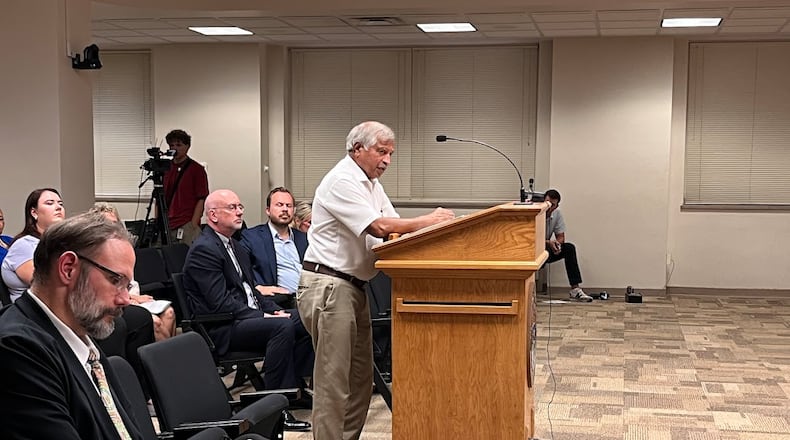It was the second hearing on the proposed rate hike. The first was held last week.
“I may be able to handle the increase,” local Realtor Sham Reddy said at the hearing. “But there are hundreds of thousands of people who can’t handle it.”
The PUCO controls the next steps. An evidentiary hearing on the proposed increase is set for 10 a.m. Sept. 9 in Columbus, with a commission vote expected early in 2026.
If approved, the monthly bill for a typical residential customer using 1,000 kWh would increase by 9%, an increase AES Ohio said.
Often when utilities propose to raise rates, they work with interested parties — or “intervenors” — on shaping the proposal, resulting (in this case) in a settlement proposing a 9% hike. Originally, AES Ohio had applied to raise rates by 14%.
“Frankly, I think it (the increase) should be zero,” resident Quinn Combs said at the hearing.
Justine Kelly, a Dayton resident, said she has seen her average monthly bill increase from $111 in 2020 to $234 last year, though she lives in the same house.
“The cost of everything is going up,” she said.
Retail electricity prices have jumped faster than the rate of inflation since 2022, and the U.S. Energy Information Administration said in May it expects them to continue rising through 2026.
Part of the issue is greater demand. Nationally, the average residential electric rate has risen more than 30% since 2020, the New York Times recently reported, driven at least in part by the growth of data centers in states like Ohio and Virginia.
This is an increase that, if enacted, would affect all Dayton-area customers. The AES Ohio “standard service offer” covers energy supply or generation. At issue here are distribution rates, charges meant to cover the cost of delivering electricity from power plants to homes and offices.
AES Ohio said it has committed an additional $1 million for its “gift of power” program, a fund meant to help residential customers unable to pay electric bills and facing disconnection.
The Office of the Ohio Consumers Counsel said AES had sought a $235 million increase. The counsel’s office said it helped reduce that increase by about $70 million, pushing for the $1 million-a-year in shareholder-funded bill payment assistance.
If you didn’t make it to the public hearing, you can still share your views.
Written comments can also be addressed to the Public Utilities Commission of Ohio, 180 E. Broad St., Columbus, Ohio, 43215.
Public comments can also be filed online, and all comments should reference AES Ohio case docket number 24-1009-EL-AIR.
AES Ohio, the former Dayton Power & Light, has about 530,000 customers in west central Ohio.
About the Author

